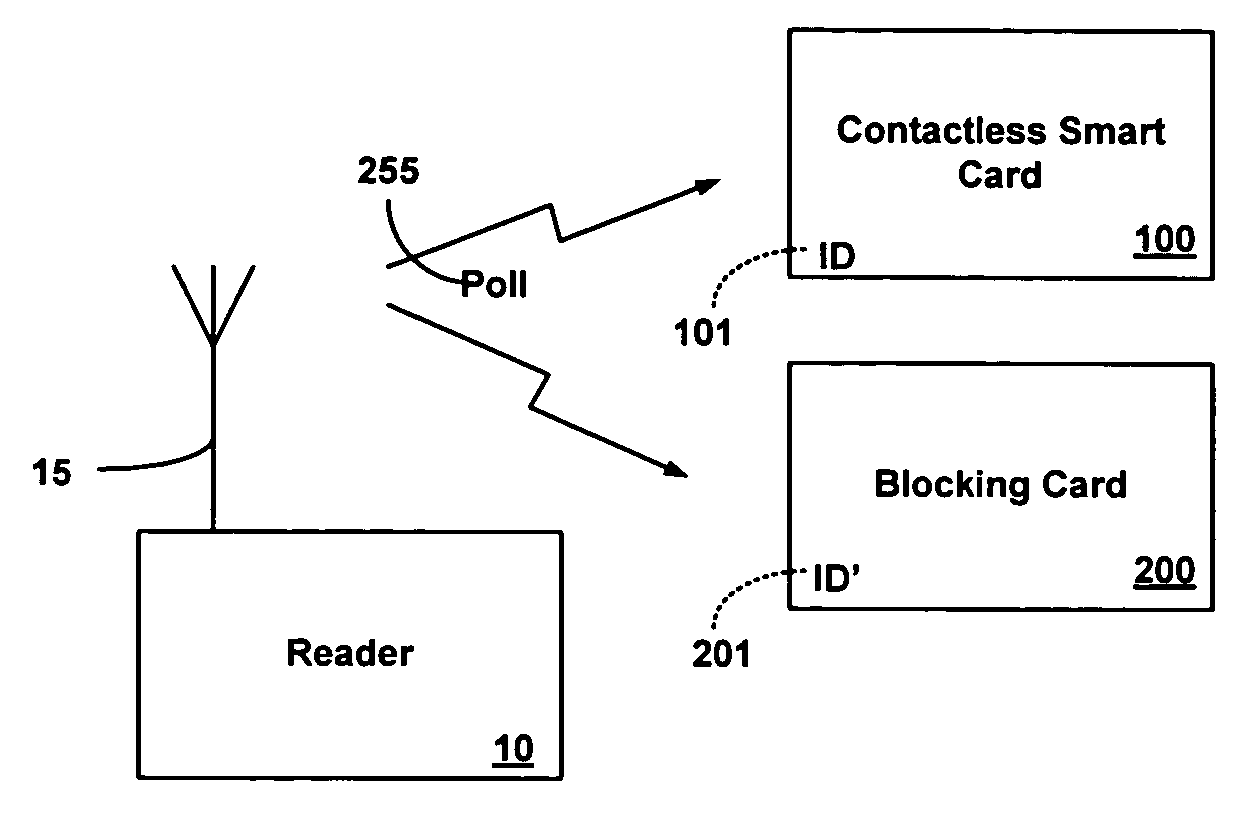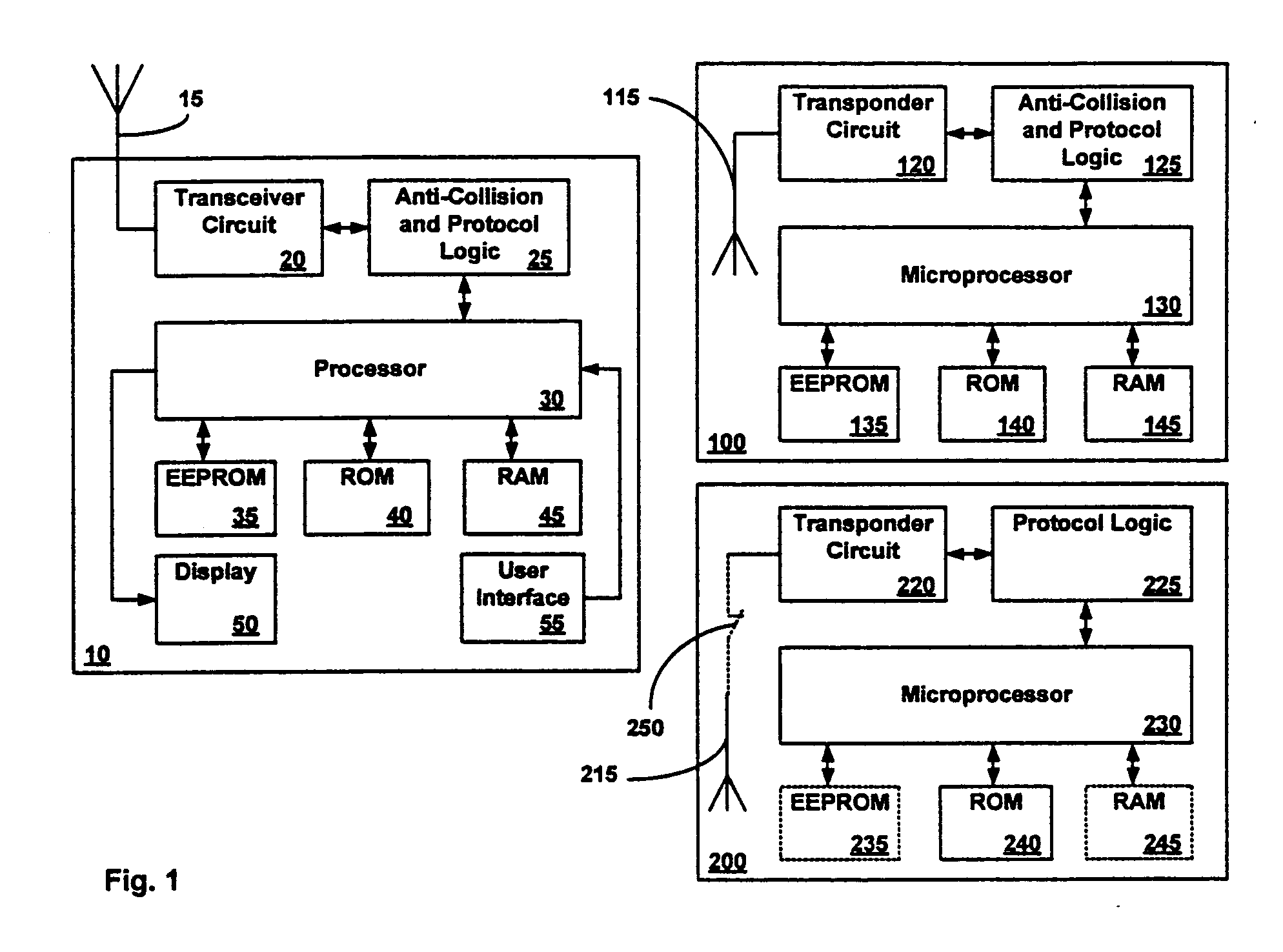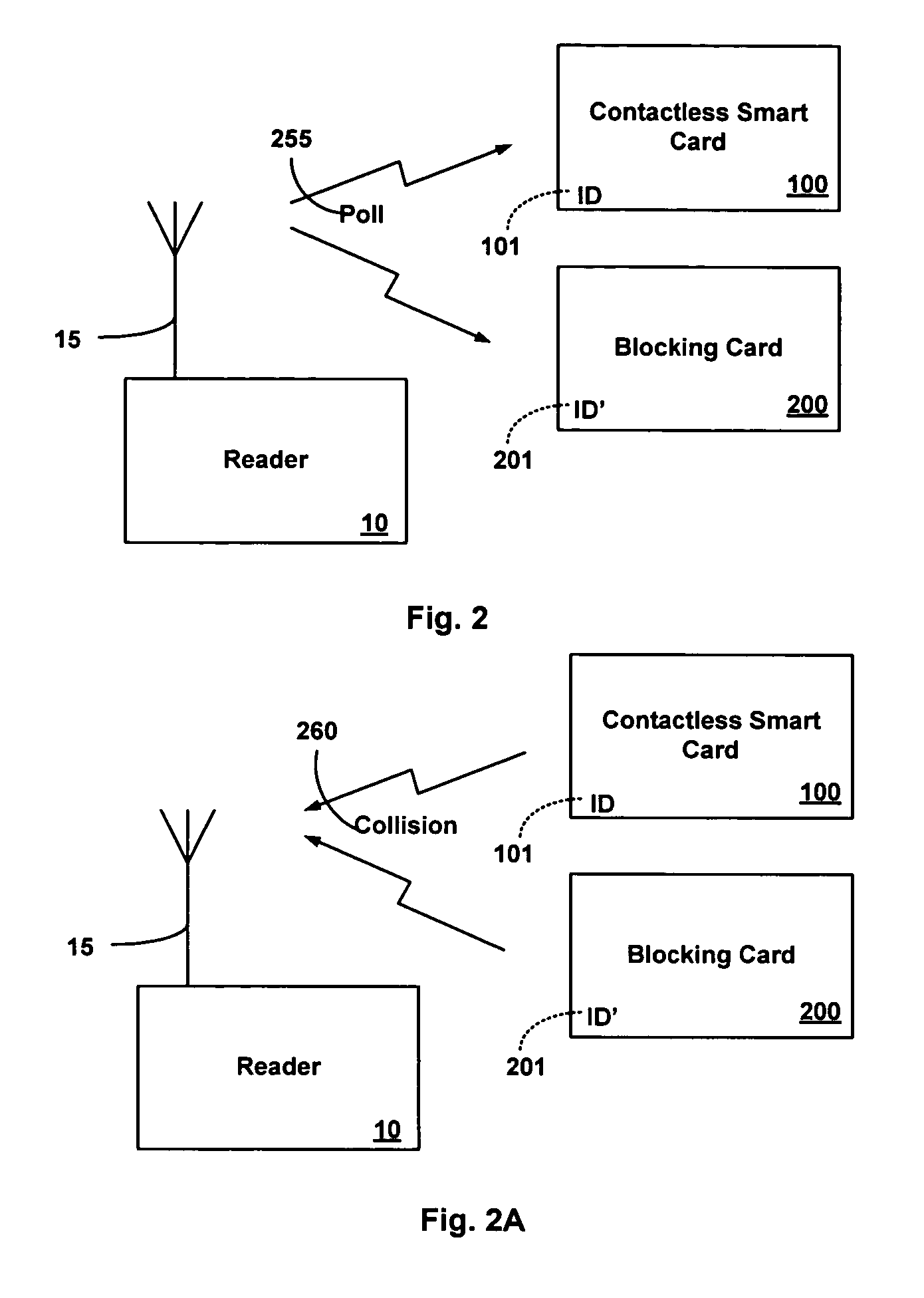Blocking contactless personal security device
a security device and contactless technology, applied in the field of contactless personal security devices, can solve problems such as security issues, contactless cards are inherent in the current design limitation, and the possibility of unauthorized access to occur
- Summary
- Abstract
- Description
- Claims
- Application Information
AI Technical Summary
Benefits of technology
Problems solved by technology
Method used
Image
Examples
Embodiment Construction
[0032] This invention addresses the inherent limitations of existing contactless smart cards and like devices (more generally referred as contactless PSDS) by exploiting an anti-collision protocol used by a RF reader to selectively access a single contactless PSD from a plurality of contactless PSDs within communications range of the RF reader. For example, in a package of RFID tagged goods passing through a check out line, in a group of people passing through a ticket gate at or near the same time, in a group of travelers passing through a customs checkpoint having contactless smart card enabled passports, or in a group of employees passing through a security kiosk, each card or tag must be individually selected by the RF reader to complete a transaction.
[0033] The most common anti-collision protocol for contactless smart cards is based on the ISO-14443 standard series. This anti-collision protocol provides ordered and sequential access to the RF reader using a single communicatio...
PUM
 Login to View More
Login to View More Abstract
Description
Claims
Application Information
 Login to View More
Login to View More - R&D
- Intellectual Property
- Life Sciences
- Materials
- Tech Scout
- Unparalleled Data Quality
- Higher Quality Content
- 60% Fewer Hallucinations
Browse by: Latest US Patents, China's latest patents, Technical Efficacy Thesaurus, Application Domain, Technology Topic, Popular Technical Reports.
© 2025 PatSnap. All rights reserved.Legal|Privacy policy|Modern Slavery Act Transparency Statement|Sitemap|About US| Contact US: help@patsnap.com



